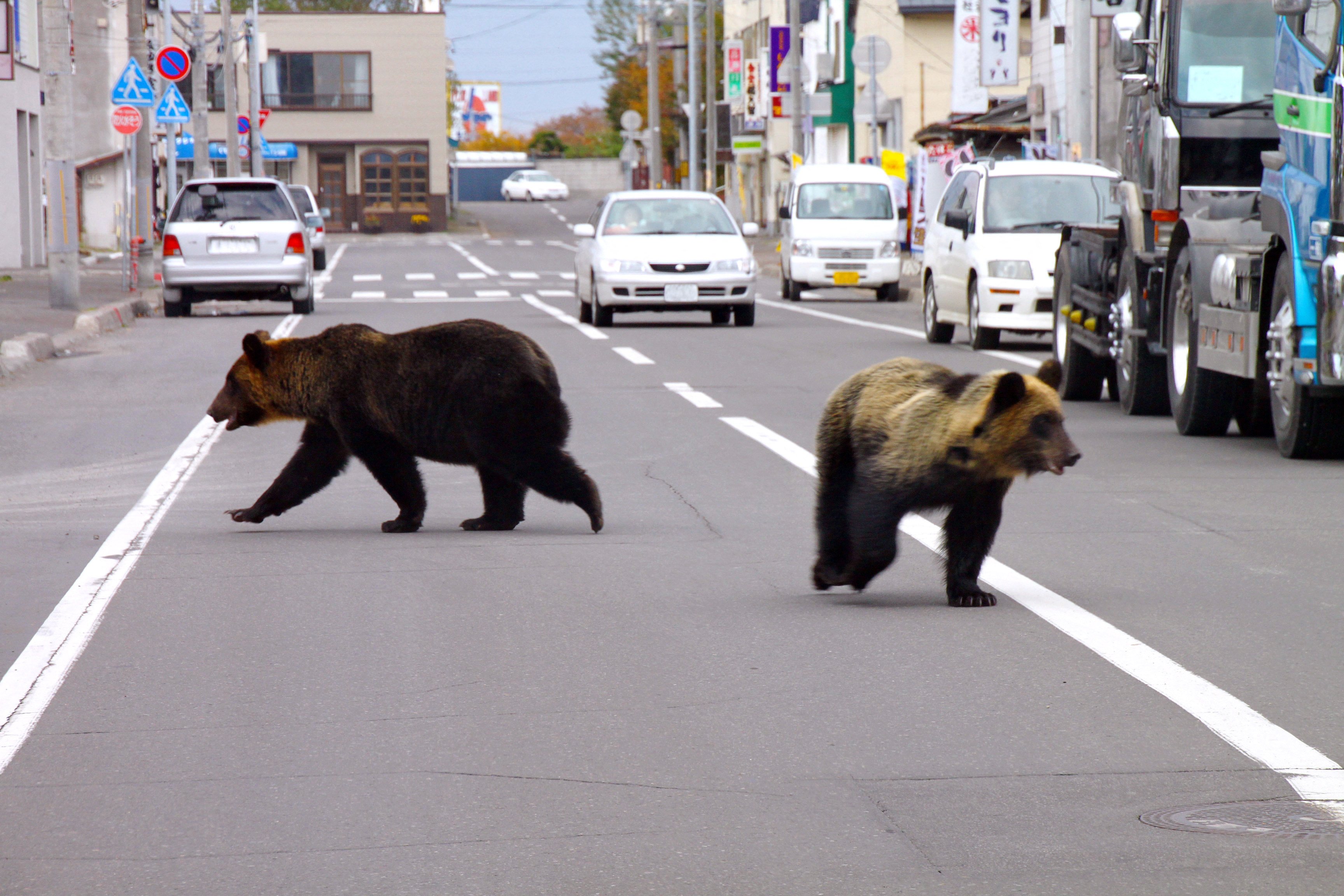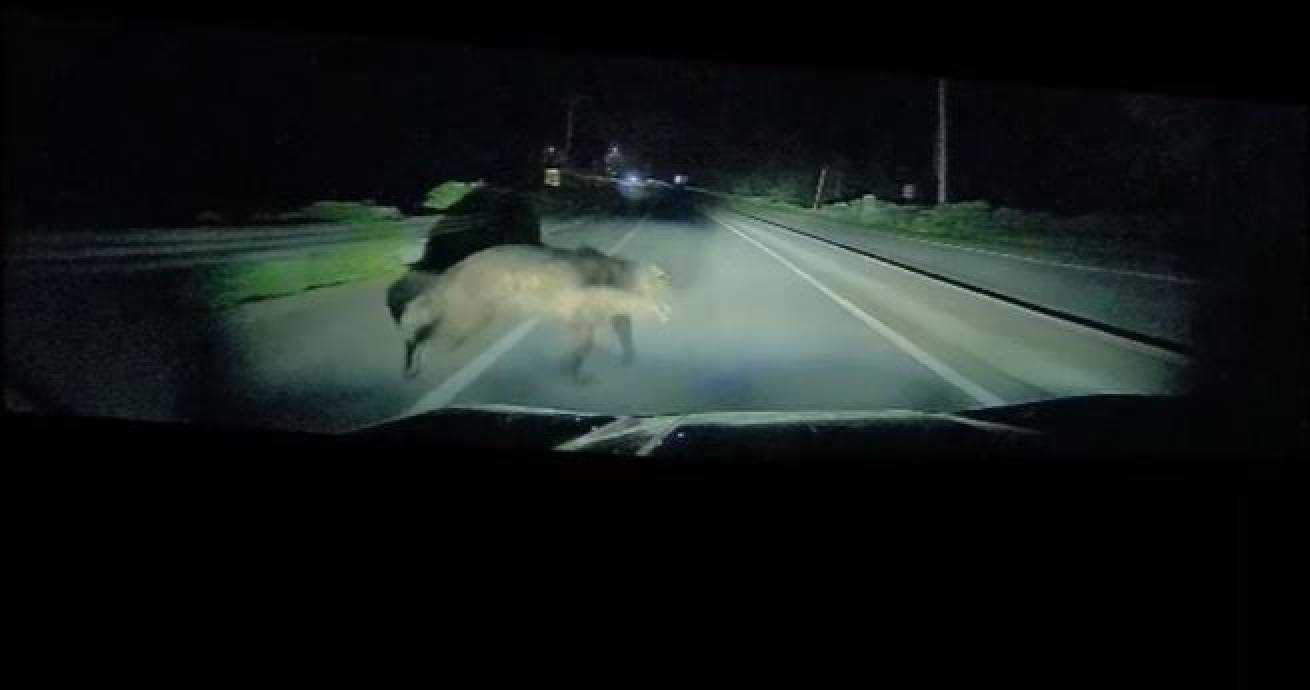Japan’s bear attacks surge: is social media clout worth risking life and limb?
Climate change, fewer hunters and shrinking habitats are causing the animals to venture into human territory, naturalist says

Police in Japan have issued warnings after three men were injured and one killed in separate bear attacks this week, amid growing alarm not only over the rising number of encounters but also over social media influencers who court danger by seeking out bears to boost their online profiles.
A 46-year-old man was killed on Sunday in a forest close to the town of Omachi in Nagano prefecture as he was collecting bamboo shoots. A man who was with him called the police after he was bitten on his arm. But it was too late for his friend, who had been clawed in the face and was pronounced dead at a nearby hospital.
On Thursday, two forestry workers were attacked by a bear in Agematsu, also in Nagano prefecture, as they were spraying deer repellent in a forest. One of the men was bitten in the face, while the other had bites and scratches on his leg as he tried to scare the animal away.
There have been other incidents involving bears coming unusually close to human habitation. On Thursday, Yamagata Airport cancelled 10 flights after a bear broke through the perimeter fence and was spotted wandering around close to the runway. Local hunters were not successful in trapping the creature.
Two schools in Goshogawara, Aomori prefecture, also had to cancel their joint sports day on Sunday and move it inside a gymnasium after four bears were sighted in the vicinity in the days leading up to the event, the local education authority told the Yomiuri newspaper.

Police in Hokkaido issued a warning to motorists on June 17 after a large bear broke out of a forest alongside a road and collided with a car being driven by a woman close to the town of Kushiro. They also cautioned anyone going into the mountains to pick wild vegetables to take precautions, such as making loud noises to warn bears of their approach and carrying bear spray.
Kevin Short, a naturalist and former professor of cultural anthropology at Tokyo University of Information Sciences, gave a number of reasons why bears were interacting with humans more frequently and violently.
“Climate change and rising temperatures mean that bears do not hibernate as long as they used to and, in some cases, they do not hibernate at all,” he told This Week in Asia. “Bears are adapting their behaviour and annual cycles to the warmer climate.”
Another factor was the sharp decrease in the number of hunters in Japan, he said. “In the past, every village would have hunters who would go out with dogs regularly and keep all sorts of wildlife – deer, boars, monkeys, bears – away from these communities.”
Bears were also venturing closer to human habitation because in many parts of rural Japan, their traditional habitats of beech and oak forests had been cleared to make way for cedar, Short added. Cedar grows fast and is a valuable crop, but provides no food for the wildlife.
As a consequence, bears are having to forage further afield, and this inevitably brings them closer to towns and villages.
There were a record 219 bear attacks in the financial year that ended on March 31, last year, including six fatalities. Between April 1 and the start of July, last year, 37 people in 16 prefectures were attacked by bears, with two deaths. Local governments across the country have reported 3,032 bear sightings in April and May, last year, around 500 more than in a typical year.
Paws for fame
Despite the authorities urging caution around bears, the Mainichi newspaper recently reported a growing trend among social media influencers to actively seek out bears in the wild.
In late May, police in northern Hokkaido were alerted to a group of content creators who were live-streaming their hunts for bears.
When the police eventually located the group, they told them that what they were doing was extremely dangerous and that they should not go into the forest at night. The police conceded, however, that they could not enforce the request. The influencers reportedly laughed at the advice and soon returned to the forest.
Short said that influencers’ desire for increasingly shocking content could easily end up getting someone killed.
“The bears on the main island of Honshu are black bears and they are smaller,” he said. “And while they are omnivores, they tend to the vegetative side and do not see humans as their natural prey.”
“But the Ezo brown bears are a completely different animal,” he said, referring to the subspecies native to Hokkaido. “They are far larger, they are more aggressive and they lean to the carnivore side in their diet.”
In August 2023, hunters in eastern Hokkaido finally shot and killed a notorious bear that had attacked at least 66 cattle over a period of four years. At 2.2 metres (7.2 feet) tall and weighing 320kg (705lbs), it was one of the largest specimens seen in the prefecture in many years.
Short cautioned not to underestimate bears. “It would be a serious mistake to turn your back on a bear anywhere in the world, but if it takes an influencer getting ripped to shreds on a live-stream then I guess others will learn the lesson.”